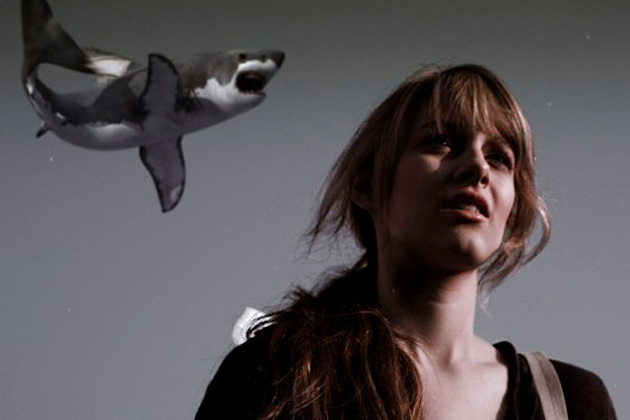Last night, on the Syfy channel’s made-for-TV movie Sharknado, Ian Ziering killed an airborne shark with a chain saw. Erik Estrada microwaved a tiny chupacabra in last year’s Chupacabra vs. the Alamo. And in the 2011 non-hit Mega Python vs. Gatoroid, 1980s pop star Tiffany was eaten by an enormous alligator as Debbie Gibson watched, scream-crying, from a helicopter that had come to save her. This is the Syfy B-movie monster machine. It is cheap, it is stupid, and it is enormously successful.
Syfy started making original movies in 2002, mostly out of necessity. “The straight-to-video market had dried up a little bit—this was before DVD rentals like Netflix (NFLX)—and some of our suppliers stopped making movies. So we said, What if we just commission you to make movies?” says Thomas Vitale, executive vice president of programming and original movies at Syfy. They started with the alien-attack thriller Interceptor Force 2, which is the sequel to Interceptor Force, a movie you’ve probably never heard of.
Today, Syfy averages 24 movies a year, each with around a $1.5 million budget, or about 1/130th of what it cost to make Michael Bay’s last Transformers movie. Syfy’s monsters are poorly rendered CGI characters that always look technologically out-of-date by at least a decade. But who cares? If you’re watching Sharknado, cinematic realism is probably not your top priority.
“The phrase we use internally is ‘ridiculously entertaining,’” says Vitale. “We have fun brainstorming sessions, I can tell you that.” In those sessions, Syfy movies are usually conceived title first, plot second. How else do you come up with something called Sharknado? There’s also Mansquito (a man who turns into a mosquito), Piranhaconda (a half-piranha, half-anaconda snake), and Sharktopus (a shark that’s—OK, you get the idea). “The Sharktopus one came from a woman who works in the promo department,” says Vitale. “She said, ‘Hey, you guys make a movie called Sharktopus’ and we went, ‘Um, OK.’”
Occasionally, the films will be “inspired” by news events, such as the revelation that the invasive snakehead fish—an ugly, carnivorous fish that can live on land for up to four days—had arrived in North America, where it has no natural predators. “My dad saw the CNN report [on the snakefish] and said, ‘You’ve got to check this out,’” says Vitale. He did, and the 2004 movie Snakehead Terror was born.
So who watches Syfy’s movies? Older dudes, mostly. According to TV research firm Horizon Media, viewers of Syfy original movies have an average age of 52. But Sharknado may have broken the mold; the movie blew up on Twitter last night, giving the impression that everyone with a TV was watching it. “Omg omg OMG #sharknado,” Mia Farrow tweeted last night, while Washington Post political reporter Chris Cillizza joked that he was writing an article about how Sharknado would affect the 2016 elections. But were all these people actually watching? According to the Los Angeles Times, Sharknado was watched by only 1 million people, which makes it a bust, even by Syfy standards. Most Syfy originals have an average viewership of 1.5 million people, with some getting twice that.
Syfy knows its audience. They like movies about sharks, snakes, and monsters. “I can’t tell you how many times Killer Koalas has been pitched us. At least a dozen times by different producers,” Vitale says. And he says no every time. “It’s a cute, eucalyptus tree-eating animal. It doesn’t inspire fear.” Other things that Syfy likes: aliens, holiday disaster movies (see: 12 Disasters of Christmas, watched by 2.1 million people last year), and movies in which a recognizable landmark gets destroyed. “Who cares that a monster is terrorizing a small town? But destroying the Space Needle? That’s more interesting,” Vitale says.
But nothing beats a good shark attack. That’s why in August, Syfy will debut a new film, Ghost Shark, about—well, you can probably guess. “It was inspired by something my 7-year-old daughter Ava said. She said, ‘Papa, you should make a movie called Ghost Monster.’” But “monster” sounds too generic, so Vitale turned it into a shark. But he promises that the movie is more than just a catchy title. “There is a logical reason in the movie for it to be a ghost shark,” he says. Yeah, sure there is. Just as logical as a bunch of sharks getting caught in a tornado.

